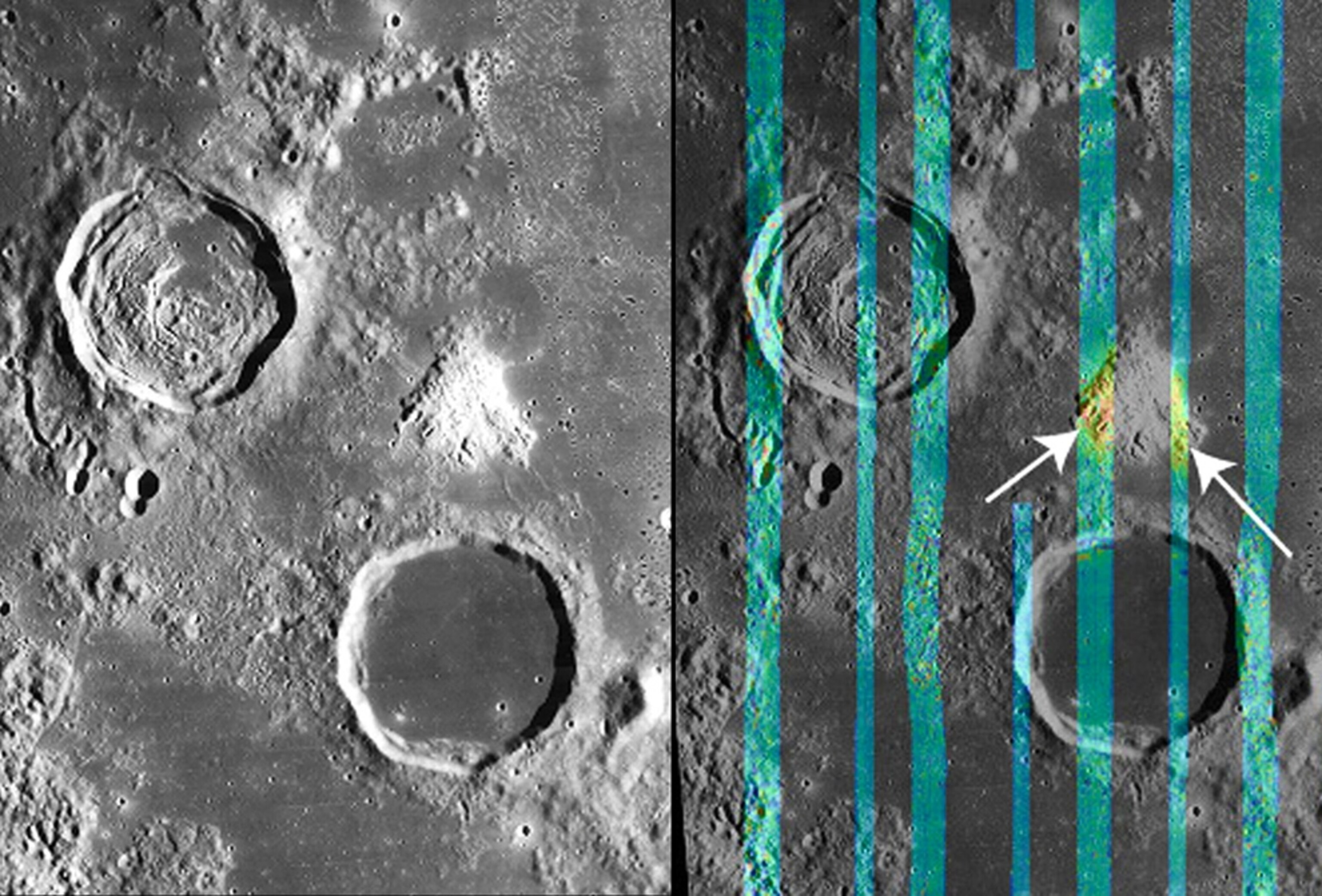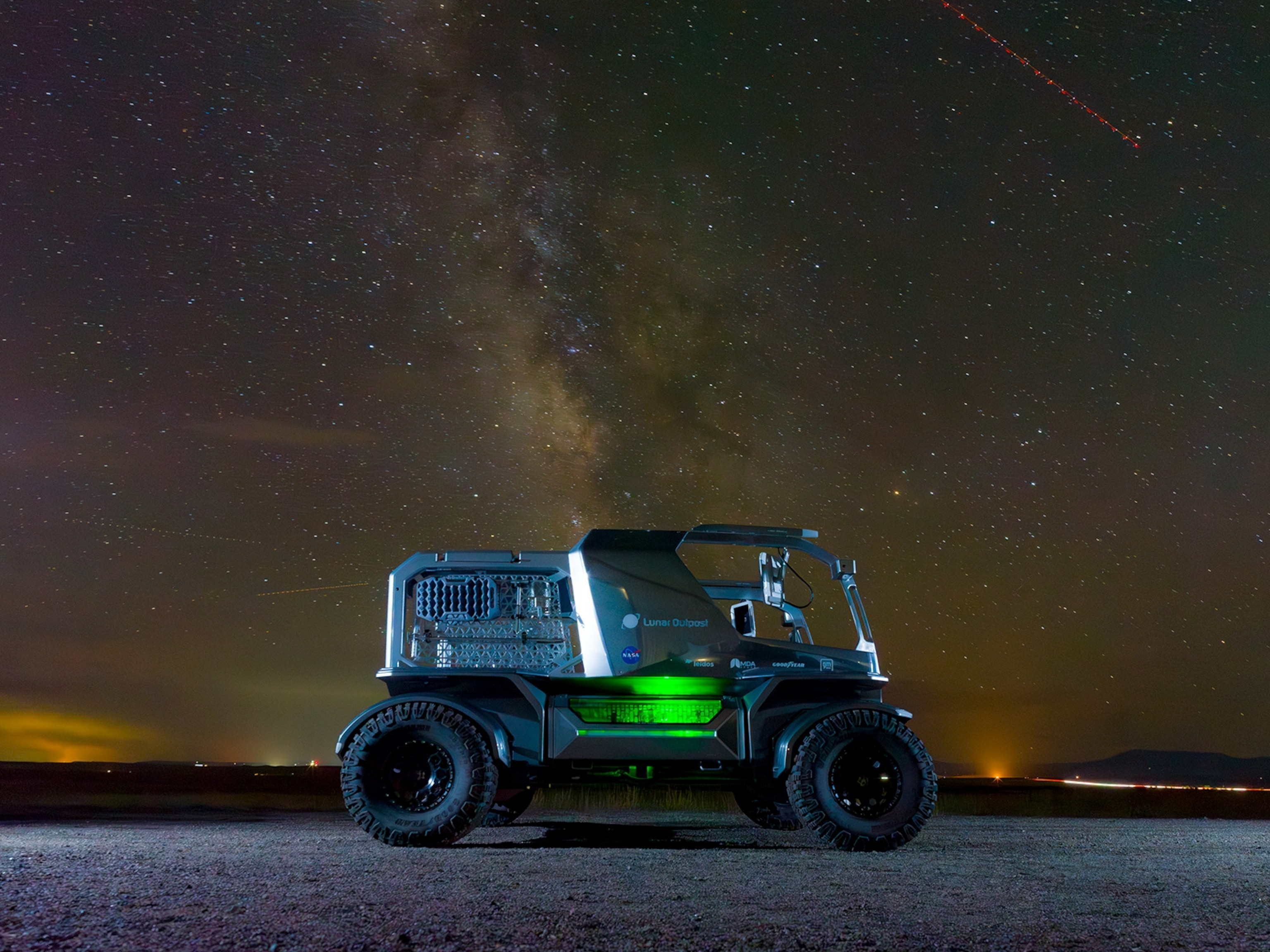
New Type of Moon Volcano Discovered
Silica-rich rocks reveal unusual lunar eruptions.
If the moon were actually made of cheese, there'd be a new flavor of dairy for humans to sample.
Data from NASA's Lunar Reconnaissance Orbiter (LRO) have revealed a new type of rock on the lunar surface—which scientists say was spat up by a style of volcano never before seen on the moon.
Until now, scientists had believed the moon was made of two basic types of rock: dark basalt and light, calcium-rich feldspar. Both would have come from volcanoes spewing relatively runny basaltic lava.
But the new volcano type oozed thicker lava rich in silica over a light, arrowhead-shaped patch of the moon roughly 18 miles (30 kilometers) across, called Hansteen Alpha, the scientists say.
New Moon Material Already on Earth?
The new type of moon volcano is now extinct—the last time it oozed any lava was two billion years ago at best, said Timothy Glotch, assistant professor of geosciences at Stony Brook University and co-author of a new paper describing the find.
(Related: "Volcanoes Rocked Dark Side of the Moon.")
Scientists found the volcano using LRO's Diviner instrument, which looks at light being reflected from the moon's surface in mid- to far-infrared wavelengths.
Different minerals will reflect unique signatures of light in these wavelengths, allowing the team to map the moon's surface composition. But the technique reveals only mineral abundance—identifying the exact types of rocks present will require further research.
On Earth, volcanoes similar to the one that birthed Hansteen Alpha create silica-based minerals such as quartz, potassium feldspar, and granite—any of which could be candidates for the new moon rock.
(Also see "'Observe the Moon Night': Top Five Lunar Targets.")
The LRO scientists think pockets of the newfound silica-based rock must have been created as basaltic magma deep in the moon melted some of the silica-containing deep crust.
Some of this newly minted material rose to the surface as lava, while some of it cooled deeper underground. (See "Ancient Moon Had Earthlike Core?")
The new rock's signature was also found inside and around some lunar craters, suggesting that when a comet or asteroid hit the moon, the impact threw up chunks of the underground silica-rich rock.
It's even possible some of this new moon material is already here on Earth.
"If you look through the material the Apollo mission brought back, we see tiny grains of granite—there might be a gram here or a gram there. People always wondered where those things came from," Glotch said.
(Related: "Water Found in Apollo Moon Rocks.")
"Here we're talking about whole volcanoes made of this rock. Sampling this other rock type would give us a completely different picture of the moon from the Apollo samples."





